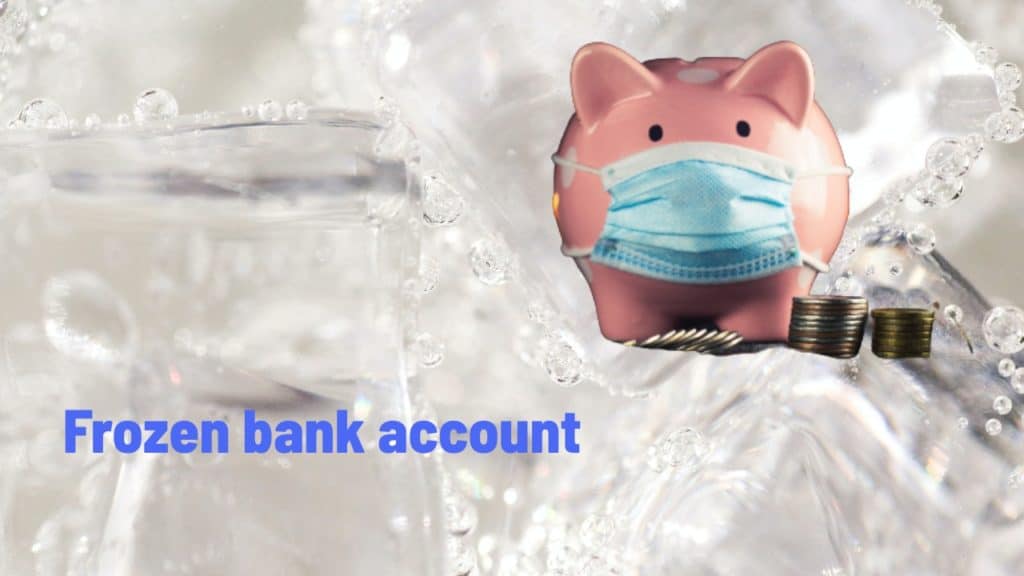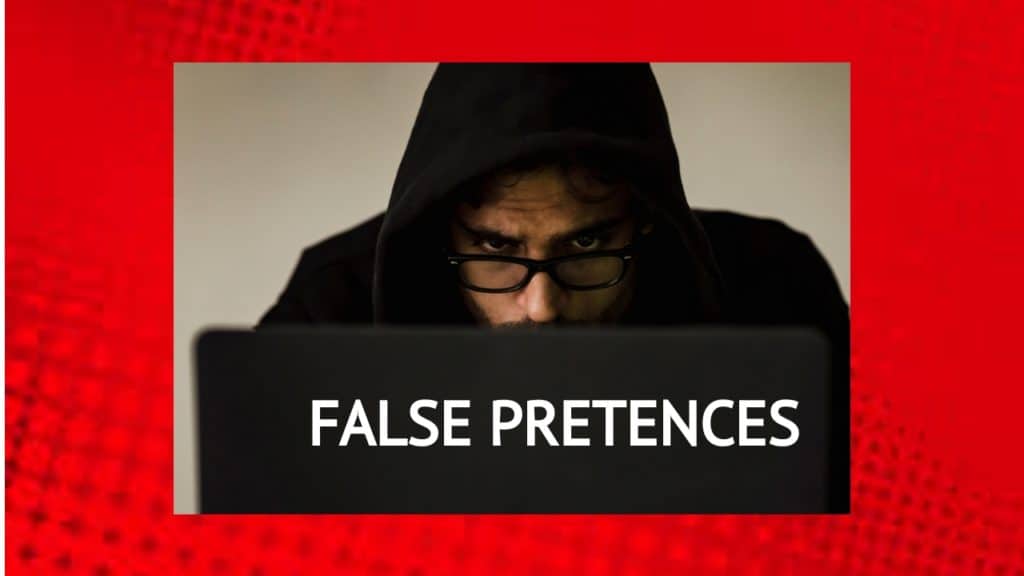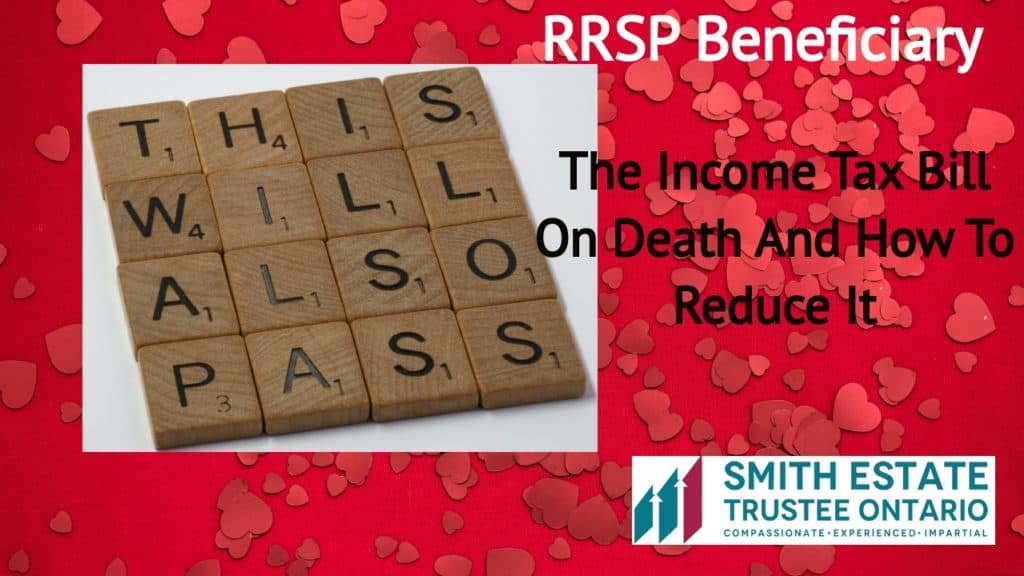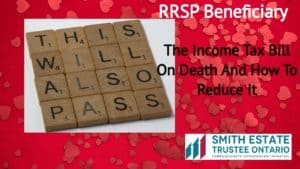
We hope that you and your family are safe, healthy and secure during this coronavirus pandemic. Ira Smith Trustee & Receiver Inc. is absolutely operational and Ira, in addition to Brandon Smith, is readily available for a telephone consultation or video meeting.
If you would prefer to listen to the audio version of this Brandon Blog, please scroll to the very bottom of this page and click play on the podcast.
Frozen bank account: Can my bank seize my accounts if I file a consumer proposal or bankruptcy?
A frozen bank account is something people usually worry about when they have unpaid financial debts and need to know. There is plenty of mistaken beliefs worrying Canadians about what legal authority the government or creditors need to seize your chequing or interest-bearing accounts, confiscate various other properties including garnishing your income. This is incredibly troubling for people with too much debt considering filing either a consumer proposal or personal bankruptcy.
I know people freak out about their frozen bank account. Rightly so, but it’s not that bad. In this Brandon Blog, I’m going to give you a basic rundown of what rights you have and what you need to do next.
In this Brandon Blog, I discuss the ins and outs of who and how can your bank accounts can get frozen and how an insolvency filing can help you not only to lift the hold on a frozen bank account. It can also get you complete debt settlement and allow you to move forward debt and stress-free.
Who can freeze your bank account in Canada?
We are always asked the question: “Who can freeze my bank account?” There are essentially three different parties who can create your frozen bank account in Canada. They are:
- The bank.
- The government.
- A creditor with unpaid debt from you sued you and won (the judgment creditor).
The latter two require the cooperation of your bank, which they will give.
What does a frozen bank account mean?
When you have a frozen bank account, it means that the bank has for some reason blocked you from using that account. It can be your personal bank account or something else such as a joint account or a business account. The bank for some reason has either temporarily or permanently made the frozen bank account and seized the cash. You will definitely be wanting to start making phone calls to your banking customer service representative!
You can get your bank accounts frozen due to:
- Court action because a judgment creditor has had it seized to get repaid, in whole or in part, for an outstanding debt.
- Canada Revenue Agency has seized the funds because you or your business owes them money.
- Your bank suspects some sort of and the bank flags suspicious activity running through the account they feel they must investigate. Perhaps they suspect money laundering, other criminal activity or other illegal activities. Something running through your account has piqued their activity to create your frozen bank account.
- You owe money to the bank for one or more bank loans that have matured and have not been repaid. The bank agreements and loan agreements that you signed gives the bank the right to offset. So not only can they freeze your accounts, they can without getting a judgment offset any balances held by the bank to your credit against the money you owe them. More on this later.
The exact terms of creating the frozen bank account will vary depending on provincial law. What it does mean is that the account holder cannot take any money out. The funds in the account can still be used by the bank to cover any amount owing to them, but the account holder cannot access the funds.

Unpaid Debts to the Government: Canada Revenue Agency (CRA) caused the frozen bank account
There are some standard reasons why CRA may cause your frozen bank account. They are:
- You owe money to CRA for personal income tax debts.
- Your proprietorship or partnership owes it money for unremitted HST or employee source deductions.
- Your company owes CRA money for the unpaid HST tax debts or employee deductions not turned over to them as they should be.
When the Canada Revenue Agency (CRA) freezes your bank account, it is doing it by one of two mechanisms. It has provided your bank with either a third party demand for any funds payable to you or with a Federal Court Order called a “Memorial“.
Either way, CRA has provided your bank with the official documentation requiring your bank to freeze your bank account and remit all funds payable to the bank account owner over to CRA.
The CRA does this in order to get money owed to them. CRA can freeze any bank account. In Ontario, this includes TFSAs and absent a bankruptcy filing, your RRSP is also subject to seizure.
In this Brandon Blog, I am only talking about a frozen bank account and not property in general. What property is subject to a person’s claim of exemption from seizure is a matter of provincial law. Likewise, wage garnishment is also governed by provincial law and is not the subject of this Brandon Blog.
Unpaid debts through creditors: How can creditors freeze my bank account?
If a creditor is looking to collect from you, once they have run out of patience with you, one of the first steps they will take is to sue you. They begin their litigation against you to get a judgment for the amount you owe. If successful, in Ontario, they then provide that judgment to the Sheriff to freeze your bank account. Once the Sheriff serves the judgment notice on the bank, it suspends your right to use your money or assets held at the bank. If a creditor causes you to have a frozen bank account, you will not be able to access your money until the issue is resolved.
It does not matter what the original debt was for – credit card debts default under your credit card agreements, an unsecured loan, payday loans from one or more payday lenders, damages under a contract or any other type of commercial debt. Once the creditor has obtained a judgment, they can get your bank to have your bank account frozen.
Frozen bank account: How to get my bank account unfrozen when I am not insolvent
If you now have an extremely icy bank account as the outcome of a judgment against you or a CRA garnishee, perhaps following a tax audit, you are probably really feeling scared and powerless. While there are no guarantees, there are actions you can take to help get your frozen bank account thawed out and your financial life back on course.
Since you are not insolvent, you cannot even consider an insolvency proceeding. But there are some things you can do.
The first thing you need to do is find out who the perpetrator is that forced your bank to create this deep freeze. Most creditors will get the bank to freeze your account to get you to concentrate on the reality that you need to take care of them. Various other means they have actually made use of to engage with you have clearly not worked. Ask your bank representative who is it that has triggered the icy account.
Since you now know who it is, connect with them. Attempt to reach a bargained negotiation in return for them lifting the freeze promptly on your account. As an example, entering into a payment plan by providing the CRA financial debt collector with a collection of post-dated cheques that will settle your tax debt in full. Absent an insolvency procedure, the CRA agent must decline anything less than 100 cents on the dollar.
If it is a judgment creditor, you may have an opportunity to negotiate a minimized settlement amount if paid instantly. Clearly, the amount will certainly need to be greater than what the creditor anticipates obtaining from your icy bank account. Alternatively, you can enter into a payment schedule that you can honour.
There is no maximum number of hours or days where you can prepare for having your chequing or savings account unfrozen. Each condition will absolutely differ. The intricacies of your negotiations as well as the length of time they take will normally be the guiding aspect.
Consequently, any bargained settlement needs to include an arrangement that will instantly result in your bank raising the freeze and allow you to maintain your cash. Either you or the creditor or both will need to supply your bank with proof of the satisfactory payment arrangement that includes the unfreezing of the frozen bank account.
The one thing I can guarantee you is that neglecting the problem will only slow down the process and will not help your frozen bank account. Your financial institution will certainly clear out your account one way or the other. If you owe your bank, the tried seizure of your account is a default on your loan. The bank will certainly take the cash in your account and offset it versus your loan. Then they will tell the judgment creditor there is no cash available for them.
If it is CRA, your financial institution will send the cash off to them.
If you do not owe your bank any kind of cash, they will send your money to the judgment creditor.
Regardless of which of the above 3 potential outcomes is, if you do not respond to an icy account, the economic repercussions can end up being far more severe.

Frozen bank account: What bankruptcy protection does the Bankruptcy and Insolvency Act provide to get my bank account unfrozen
If you find yourself with too much financial debt, especially from unsettled tax obligations, you might be thinking of bankruptcy. Though the word “bankruptcy” is frequently made use of to explain any type of situation in which a person is unable to pay their debts, the legal term “bankruptcy” really describes a particular legal process administered by the Bankruptcy and Insolvency Act (Canada) (BIA).
In reality, there are three possible provisions of the BIA that can be used by a person to not only do a government-authorized debt settlement program. It also has the added benefit of immediately unfreezing your bank account. The three possible choices are:
- Consumer proposal debt settlement plan
- Division I proposal debt settlement plan
- Bankruptcy
Let’s focus on the bankruptcy protection possibilities, being a consumer proposal or a Division I proposal, rather than a pure bankruptcy liquidation. If you have a bank account that is iced, a filing under the BIA invokes an immediate stay of proceedings. This means that once a person has filed with the licensed insolvency trustee, any action to try to enforce collection on debt cannot be started or continued. This includes the frozen bank account as part of a seizure. Therefore the bank account must be unfrozen once the bank receives notice of the filing.
There are only two exceptions to this for your frozen bank account: one lawful and one debatable.
Lawful – If the seizure has been completed before the bank receives notice of the filing, then it is game over. Your account is unfrozen, but there is no cash left in it. This means the bank has made the payment to itself already, already transferred the money to CRA.
In the case of a creditor, the Sheriff has had to have distributed the money and it has to have already been received by the creditor. If the Sheriff still has it, he cannot proceed to send it on to the creditor. In the case of a proposal, he must return it to the insolvent person who has filed. If a bankruptcy, the Sheriff must hand the money over to the Trustee.
Debatable – You owe the bank money. Once they receive notice of your filing, your lender takes the position that they have the right to offset any money on deposit to your credit against any amount you owe them. After you file and they receive notice, they empty out your account and apply for the money to be put against your bank loan or credit card debt. This action of maintaining your frozen bank account and keeping the cash is debatable.
Can you open a new bank account if your account is frozen? Definitely, just not at the same bank!
Most people can open a new bank account when they have a frozen bank account. However, why would you want to open a new one up with the same bank? They probably view accounts frozen for nonpayment as accounts that are high risk. Your creditors also now know where you bank. If you owe your bank money, as I have already discussed, you cannot keep your cash there anymore anyway.
The frozen bank account prevents you from withdrawing your money. If you have had your bank accounts frozen multiple times, the bank simply won’t issue another account and will be very happy to see you leave.
We always advise anyone contemplating filing a proposal or for bankruptcy, to set up a new account. Then, advise anyone who automatically deposits money into your account, that they should start depositing into your new account. Like your employer or the government.
It is also important to tell anyone you have granted a pre-authorized withdrawal to of the new bank account and make arrangements for them to pull the money out of the new account once there is money in it. Like your mortgagee you make your monthly mortgage payment to or your landlord you pay rent to, utilities, the vehicle loan company. Now your bank or their credit card division cannot automatically take your money to offset your liability to them.
We normally steer people towards one of the online banks, as it is unlikely that they owe money to them. We do not earn any commission for steering business to any bank, so we do not have a conflict. Something like a Simplii or EQ Bank savings and chequing accounts seem to work just fine. Then the person files and nobody can take some debatable action against the funds in their bank account.
Frozen bank account: Get a personalized no-cost debt-free plan today
I hope you enjoyed the frozen bank account Brandon Blog post. The entrepreneur may be very frustrated that the company can no longer pay all its debts as they come due.
There may be sufficient value to take care of the secured creditor, but nothing for anyone else, including the unsecured creditors. There may be some business units that should not survive, but if cut out, the business will be viable. A receivership might very well accomplish the goals for the entrepreneur also. I have many times structured a receivership process, in order to meet the goals of the entrepreneur, while satisfying the requirements of the secured creditor.
Are you worried because you or your business are dealing with substantial debt challenges and you assume bankruptcy is your only option? Call me. It is not your fault that you remain in this way. You have actually been only shown the old ways to try to deal with financial issues. These old ways do not work anymore.
The Ira Smith Team utilizes new modern-day ways to get you out of your debt difficulties while avoiding bankruptcy. We can get you the relief you need and so deserve.
The tension put upon you is big. We know your discomfort factors. We will check out your entire situation and design a new approach that is as unique as you and your problems; financial and emotional. We will take the weight off of your shoulders and blow away the dark cloud hanging over you. We will design a debt settlement strategy for you. We know that we can help you now.
We understand that people and businesses facing financial issues need a realistic lifeline. There is no “one solution fits all” method with the Ira Smith Team. Not everyone has to file bankruptcy in Canada. The majority of our clients never do. We help many people and companies stay clear of bankruptcy.
That is why we can establish a new restructuring procedure for paying down debt that will be built just for you. It will be as one-of-a-kind as the economic issues and discomfort you are encountering. If any one of these seems familiar to you and you are serious about getting the solution you need, contact the Ira Smith Trustee & Receiver Inc. group today.
Call us now for a no-cost consultation.
We will get you or your business back up driving to healthy and balanced trouble-free operations and get rid of the discomfort factors in your life, Starting Over, Starting Now.
We hope that you and your family are safe, healthy and secure during this coronavirus pandemic. Ira Smith Trustee & Receiver Inc. is absolutely operational and Ira, in addition to Brandon Smith, is readily available for a telephone consultation or video meeting.


















